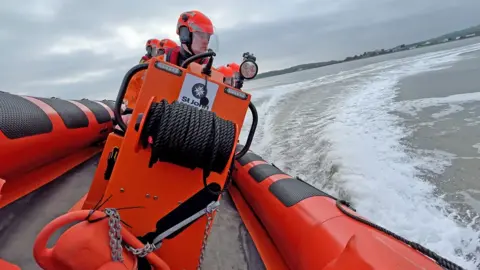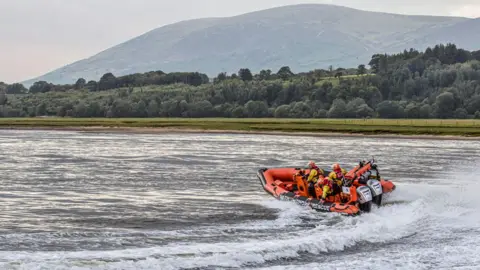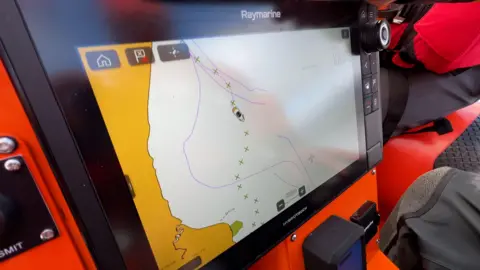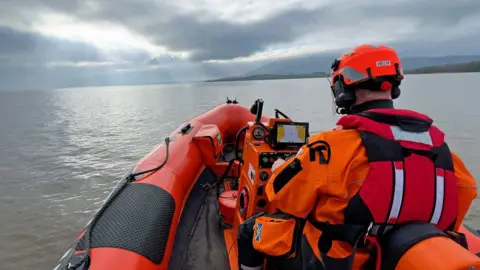Helping to save lives at sea with data from space
 University of Strathclyde
University of StrathclydeA pioneering project is hoping to help lifeboats save lives on the shifting waters of the Solway Firth by harnessing data sent from space.
The area off the south of Scotland coast is considered dangerous due to some of the fastest tidal movements in Europe.
Large areas of mudflats surround the estuaries of the River Nith and River Annan, with many areas vulnerable to quicksand.
A pilot scheme is seeing if satellite imagery could help rescuers navigate the waters more quickly to get to people who find themselves in difficulties.
 Kim Ayres
Kim AyresEven current state-of-the-art marine navigation maps can leave areas blank and uncharted.
It restricts the ability of rescue services to support safe access without the risk of becoming casualties themselves.
The University of Strathclyde was approached by Nith Inshore Rescue with an idea to use satellite imagery to identify navigational channels through uncharted waters.
The independent volunteer lifeboat serves the Upper Solway and Dumfries area and is based at Glencaple in Dumfries and Galloway.
The Safe Passage project - funded by the European Space Agency (ESA) - has seen a research team from the university using the estuary as a trial site.
They are investigating the use of synthetic aperture radar (SAR) data from satellites to provide regular, accurate mapping of moving channels in the coastal region.
It can be used to differentiate between sand and water and even works in nocturnal or cloudy conditions, allowing the lifeboat to find a consistent minimum depth along a route.
Previously, the crew had to manually conduct depth soundings, but during bad weather and strong tidal periods these passageways shift rapidly, making a previously-measured route potentially unusable.
 University of Strathclyde
University of StrathclydeInaccurate information can mean the lifeboat has to switch course mid-rescue, slowing down response and even potentially grounding the boat.
Prof Malcolm Macdonald, chairman of applied space technology at the University of Strathclyde, said: "The work investigates the alternatives to provide regular mapping of the intertidal zone, enabling these teams to reach casualties without becoming casualties themselves.
"They need to get to the scene as safely and quickly as possible.
"The crews were manually depth-gauging the flats every fortnight but they can change on an almost daily basis."
 University of Strathclyde
University of StrathclydeHe said the new system had a number of advantages for the area.
"Optical satellite data – similar to how your phone works – works well in other parts of the world, but on the west coast of Scotland, you get predominantly pictures of clouds," he explained.
"Radar data penetrates the cloud but can be difficult to interpret, and so we started looking at how we could use that data."
The volunteers now receive updated charts of satellite imagery generated waypoints.
 University of Strathclyde
University of StrathclydeThe routes have already been used in real-life rescues, including a successful call out on the Cumbrian coast for two casualties trapped in a car due to coastal flooding.
The route charts are also backed up by the crew's own skills and local knowledge, but climate change is making this increasingly difficult.
The team is now working with ESA to improve the charting and believes the system could make the 13 million hectares of tidal flats across the world more accessible.
Nith Inshore Rescue crew member Gwilym Gibbons said: "To see and test the results of the work in a real environment as an additional aid has already proved the huge potential this could have across the world.
“Our ambition is for Safe Passage to become a commercial navigation data feed service for a range of marine navigation uses, with a proportion of revenues generated going to support the vital work of our wholly volunteer lifeboat services.
"It's literally saving lives at sea from space."
